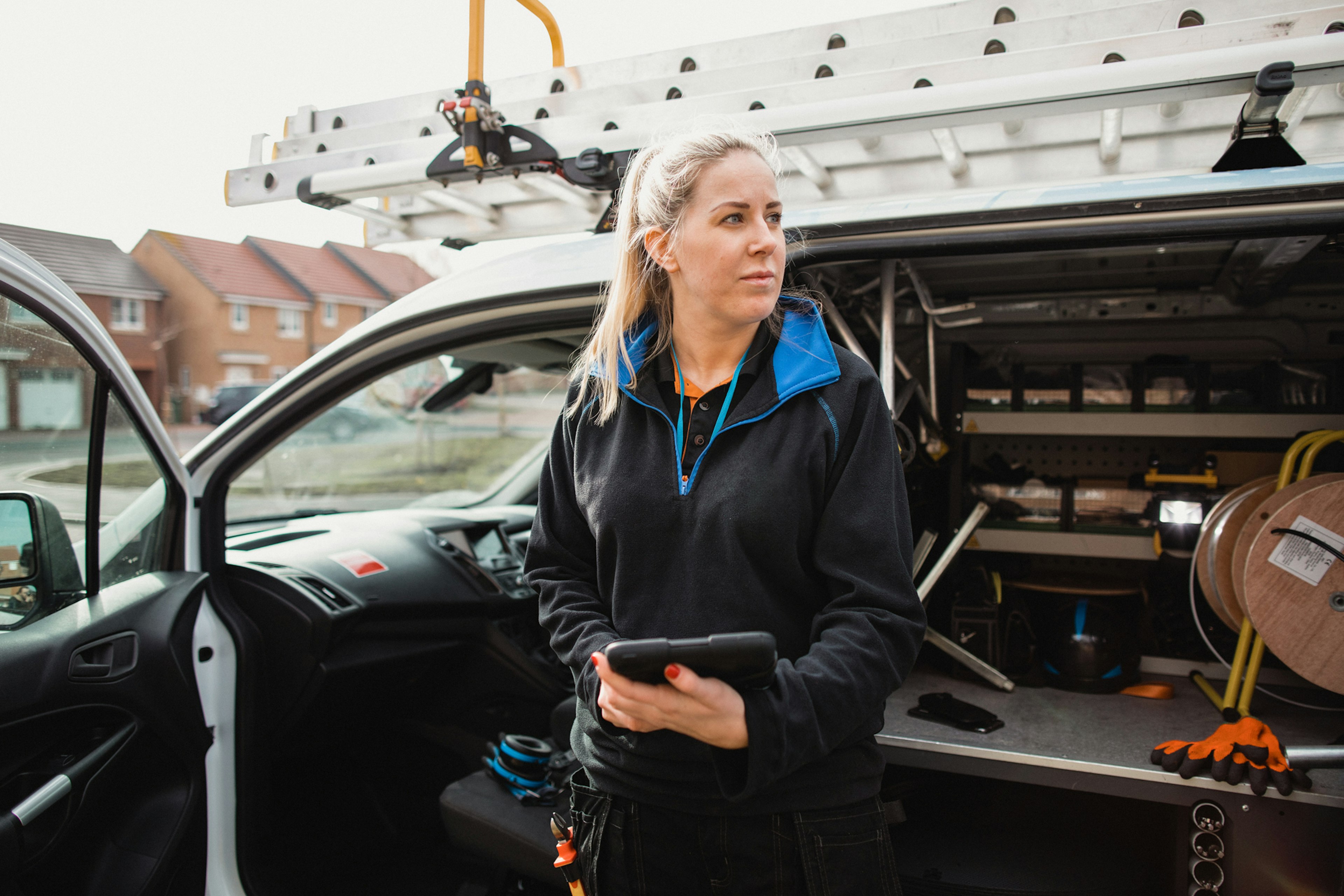A host of trends—some demographic, some pandemic related, some cultural—have created a perfect storm of sorts, making it tough for companies to secure what they need most: qualified talent. In today’s hypercompetitive battle for the right people, ensuring your employees are happy—and remain so—matters more than ever. Your fleet can be a powerful recruitment and retention tool, since the condition, performance, and features of your vehicles influence your drivers’ satisfaction.
Here are things to consider to make sure your fleet vehicles are viewed by your current and prospective employees as persuasive reasons to work for your organization.
Safety features and advanced technology say you care.
When an individual accepts a job, they want to know their best interests are considered and the company cares about them and their well-being. For those whose jobs require driving a company vehicle, preventative maintenance, safety features, and onboard technology are paramount.
Your employees are apt to better value and more deeply appreciate a vehicle when it includes fleet safety management features such as brake assistance, lane departure crash avoidance, and blind-spot warnings. There are, of course, a host of other, less obvious fleet vehicle safety features you can turn into selling points:
- Hands-free and connected vehicles, simplifying communication while on the move
- GPS synchronization for routes/logistics, allowing drivers to focus on driving safely instead of multitasking
- GPS technology for driver-synchronization
- Aftermarket equipment like blind-spot cameras and exterior or extra interior lighting
Don’t make drivers work any harder than they need to.
Every home typically has a kitchen drawer known as the “junk drawer.” It’s where random objects reside, waiting for us to dig through them in search of a lighter, rubber band, etc. Your employees don’t want their vehicles to have a “junk drawer” feel. That’s why upfitting is such a powerful tool in optimizing a van or truck for efficiency, comfort, and ergonomics.
Upfitting increases overall employee productivity—and happiness—by ensuring their vehicle works harder for them. In so doing, your fleet vehicle management will work harder for your company too. It’s a win-win. A strategically specified vehicle and a well-planned upfit can optimize a driver’s performance, improve the customer experience, and reduce time spent on each job. For instance, optimizing the vehicle to create the experience of a true mobile office can be achieved with the inclusion of adjustable and/or hidden laptop mounts as well as onboard power outlets for other tools.
Consider a pickup truck that requires employees to reach into the bed multiple times per day. Rather than forcing the employees to strain themselves—running the risk of injury or damaging their uniforms—an upfit engineer might recommend installing pullout bed or side-mounted toolboxes. Similarly, for employees working with several different parts and components, a coded shelving and storage system with LED lights overhead would make the task more efficient.
These matters can add up over days, weeks, and months. If properly addressed, they’ll keep fleet drivers happy; if not, they could frustrate them to the point where they start looking elsewhere for employment.
New EVs and interior features can help with curbside appeal.
While safety, comfort, ergonomics, and overall fleet preventative maintenance are especially important to your employees, do not discount the positive impact of an attractive vehicle. Of course, depending on your industry and fleet type, “attractive” may mean something beyond aesthetics, such as a van’s storage capacity or a truck’s horsepower.
A vehicle need not be an EV to be attractive, but these days, it doesn’t hurt. In December 2021, FedEx received five of the first 500 BrightDrop EV600 commercial vans from GM. With 600 cubic feet of cargo space and a reported range of up to 250 miles, these vans not only benefit a company’s bottom line, they also grab the attention of current and would-be delivery professionals.
With GM, Chevy, Ford, and Tesla, as well as new companies like Rivian and Nikola, producing new EV vehicles, their inclusion within fleets will soon be enticing to drivers too. After all, who wouldn’t want to enjoy a more ergonomic cabin, better acceleration, and longer range? Employees take pride in driving these smart, head-turning vehicles and credit your company for the opportunity.
Don’t hesitate to showcase your vehicles’ benefits.
To get the most from your fleet as a recruitment and retention tool, be sure to tout your vehicles’ features and benefits to current and prospective employees. Use employee communications, such as email newsletters or intranets, to demonstrate how hard your vehicles work for those who drive them. As for prospective employees, include a fact sheet about your fleet in your recruitment materials. If a drive-along is part of your hiring process, encourage your employee conducting the drive-along to spend a few minutes describing the vehicle’s best features to the potential new employee.
Happy employees are more productive and more likely to remain with your organization even when other opportunities present themselves. With this in mind, is your fleet doing all it can to keep your drivers happy and in your employ?


